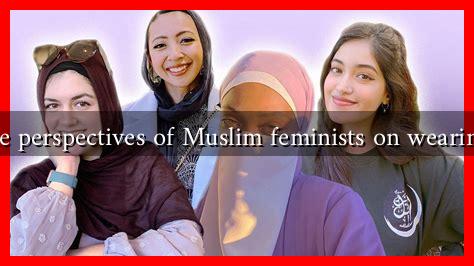-
Table of Contents
What are the Perspectives of Muslim Feminists on Wearing the Hijab?
The hijab, a traditional headscarf worn by many Muslim women, has become a focal point of debate within feminist discourse. While some view it as a symbol of oppression, others see it as an expression of identity and empowerment. This article explores the diverse perspectives of Muslim feminists on wearing the hijab, highlighting the complexities of choice, cultural significance, and the intersection of faith and feminism.
The Hijab: A Symbol of Identity
For many Muslim women, the hijab is not merely a piece of clothing but a profound symbol of their faith and identity. Muslim feminists argue that the hijab can serve as a means of self-expression and autonomy. They emphasize that the decision to wear the hijab should be respected as a personal choice, free from external pressures.
- Empowerment through Choice: Many Muslim feminists assert that wearing the hijab can be an empowering act. It allows women to reclaim their bodies and assert their identity in a world that often objectifies them.
- Cultural Significance: The hijab carries deep cultural and religious significance for many. It can symbolize a connection to heritage and community, fostering a sense of belonging.
- Resistance to Stereotypes: By choosing to wear the hijab, some women challenge Western stereotypes about Muslim women being oppressed or submissive, thus redefining narratives around their identity.
The Debate on Oppression vs. Empowerment
While many Muslim feminists advocate for the hijab as a choice, there are also voices within the movement that critique its imposition. The debate often centers around the concepts of oppression and empowerment.
- Imposed Hijab: In some contexts, the hijab is mandated by law or societal pressure, leading to a perception of oppression. Feminists argue that true empowerment comes from the freedom to choose, rather than being coerced into wearing the hijab.
- Intersectionality: Muslim feminists often highlight the importance of intersectionality, recognizing that experiences of oppression can vary widely based on factors such as race, class, and geography. For instance, a woman in a conservative society may face different challenges than one in a more liberal environment.
- Global Perspectives: The hijab’s meaning can differ significantly across cultures. In some Western countries, wearing the hijab can be a political statement against Islamophobia, while in others, it may be seen as a sign of submission.
Case Studies: Diverse Experiences
To illustrate the varied perspectives on the hijab, consider the following case studies:
- Malala Yousafzai: The Nobel laureate and education activist has spoken about her choice to wear the hijab as a symbol of her faith and identity, particularly in the face of Taliban oppression.
- Linda Sarsour: A prominent activist in the U.S., Sarsour has used her platform to advocate for Muslim women’s rights, emphasizing that wearing the hijab is a personal choice that should be respected.
- Women in France: The ban on hijabs in public schools has sparked significant debate about freedom of expression and the rights of Muslim women, highlighting the tension between secularism and religious expression.
Statistics and Trends
Recent studies indicate that attitudes toward the hijab are shifting among younger generations of Muslim women. According to a 2021 survey by the Pew Research Center:
- Approximately 60% of Muslim women in Western countries reported wearing the hijab as a personal choice.
- In contrast, 40% of women in more conservative regions indicated that they felt societal pressure to wear it.
These statistics underscore the importance of context in understanding the hijab’s significance and the diverse experiences of Muslim women around the world.
Conclusion: Embracing Diversity in Feminism
The perspectives of Muslim feminists on wearing the hijab are as diverse as the women themselves. While some view it as a symbol of empowerment and identity, others critique its imposition as a form of oppression. Ultimately, the key takeaway is the importance of choice and respect for individual experiences. As the discourse around the hijab continues to evolve, it is crucial to embrace the diversity of voices within the feminist movement, recognizing that empowerment can take many forms.
For further reading on this topic, you can explore resources from organizations like Muslim Feminism and Pew Research Center.


